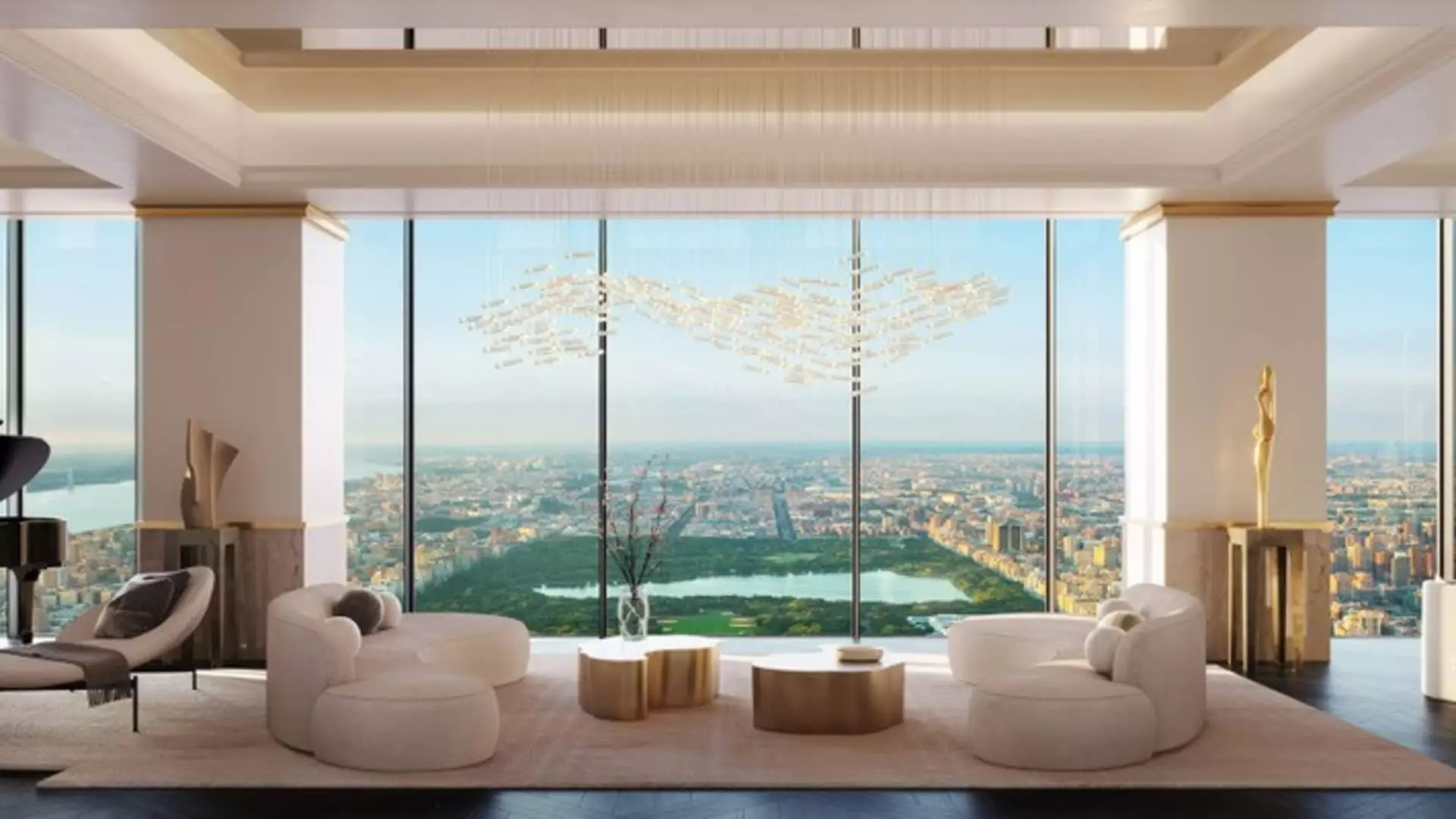In an astonishing juxtaposition of wealth and economic turbulence, a $110 million penthouse recently emerged as Manhattan’s most expensive residential offering. This opulent property, positioned atop the Steinway Tower, debuted amidst the backdrop of the Dow Jones Industrial Average’s dramatic falls—plummeting nearly 4% in a single day, followed by a staggering 2,231-point decline. The timing of this listing could not be more ironic; it represents not only the pinnacle of luxury living but also starkly contrasts with the economic realities facing many Americans today.
As market headlines rave about wild stock fluctuations, the ultra-wealthy appear largely undeterred. Nikki Field, the Sotheby’s International Realty broker responsible for this jaw-dropping listing, confidently stated, “This buyer segment remains untouched by market volatility.” Their focus, she indicates, is not on the headlines but rather on curating exceptional assets. Herein lies a critical observation: such occurrences underscore the persistent financial chasm between the ultra-rich and the vast majority of the nation. When Wall Street trembles, these affluent buyers seem equipped to shrug off the events as mere background noise while they pursue their dreams of sumptuous living.
The Dream Home That Defines Exclusivity
The penthouse itself is a spectacle—spanning a ridiculous 11,480 square feet and combining two units, it offers a quadplex potential with stunning views of both Central Park and the rivers flanking Manhattan. This extravagant configuration includes five bedrooms, six bathrooms, and an enviable 618-square-foot terrace. The architectural promise of these two separate units offers buyers unique potential, effectively transforming them into an enclave of luxury. This encapsulation of wealth symbolizes how real estate can become a political and economic sanctuary, one where the whims of the broader market may seem irrelevant.
But as we exalt this luxury, it is crucial to interrogate the implications of such extravagant real estate transactions. Jonathan Miller from Miller Samuel remarked that multi-million and even billion-dollar sales are no longer mere publicity stunts but have increasingly begun to represent a new, albeit select, portion of the market. This shift raises inevitable questions: What does this mean for urban environments? How should society respond to these ostentatious displays of wealth while many Americans grapple with instability brought on by economic policies?
The Higher Stakes of Economic Uncertainty
Along with this opulence comes a layer of complexity—the uncertainty surrounding tariffs and their potential impact on economic stability, particularly in the housing market. Experts note that a lack of clarity regarding trade policies can have profound repercussions. It may deter middle and lower-income buyers from participating in the housing market while simultaneously swaying the decisions of the wealthiest, who are now faced with a dilemma: whether to invest their money in volatile financial markets or secure tangible assets like luxury real estate.
Douglas Elliman’s Noble Black expressed this sentiment, stating that economic worry holds sway over buyers. They are reluctant, uncertain whether these tariff measures will skyrocket real estate prices or push them into an inflationary pit. Meanwhile, the privileged class continues to embrace their inherent economic shield, unfazed by the chaos that dictates so many lower-tier realities. It’s a blatant dichotomy that exemplifies the widening wealth gap in America.
The Resilience of the High-End Market
Interestingly enough, amidst this turmoil, signs of resilience in the high-end housing market remain palpable. According to the Olshan Luxury Market Report, there was a slight uptick in activity with 33 contracts signed for luxury homes priced at over $4 million. This figure reflects a contrasting trend within luxury sales, where both buyers and sellers are navigating through disjointed market perspectives: buyers are often cautious and meticulous, while sellers cling to inflated price expectations from the pre-2020 era.
The market is embroiled in a delicate dance, influenced by the dual pressures of buyer hesitance and seller ambition. As luxury broker Aaron Kirman points out, successful transactions hinge on negotiated terms and conditions that accommodate the growing wariness of buyers. The once swift house sales are turning into lengthy negotiations, indicating that those with wealth must now exercise a degree of caution and patience.
A Market in Flux: Implications for Society
As North America’s luxury market undergoes this transformation, the implications extend beyond just financial transactions. The adaptive nature of the market illustrates broader socio-economic shifts—where the elite continue their quest for exclusivity and status, often disregarding the very real economic constraints faced by ordinary citizens. This landscape raises essential questions about how real estate developments should be aligned with the prevailing economic climate.
Investments in luxury properties indicate both value and privilege for the few; as more buyers at high tiers seek “irreplaceable waterfront” or unique “trophy properties,” we must ponder the larger question: How will this market evolve? Will it maintain its glitzy allure while many are left fumbling for the remnants of the American dream in a landscape skewed by economic variables far beyond their control? The answer lies not just in stock market indices, but how we understand and confront the profound implications of wealth in our communities.

